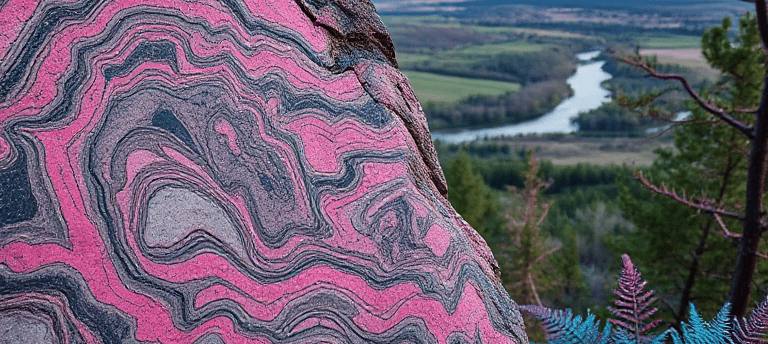The World's Oldest Known Dated Rock Found in Minnesota
Minnesota, known as the Land of 10,000 Lakes, holds a geological marvel hidden beneath its serene landscapes. Within the state’s ancient terrain lies the world's oldest known dated rock, a discovery that has reshaped our understanding of Earth’s early history.
DipVai
1/30/20253 min read


Minnesota, often celebrated for its vast lakes and scenic landscapes, holds a geological treasure that few know about. Hidden beneath its picturesque terrain is a piece of Earth's ancient past: the Morton Gneiss. This remarkable discovery, dating back an astounding 3.6 billion years, has captivated scientists and historians alike, reshaping our understanding of the early history of the planet.
The Discovery of the Ancient Rock
In the early 1980s, geologists conducting research along the Minnesota River Valley stumbled upon an extraordinary formation. Close to the town of Morton in southwestern Minnesota, they identified a type of rock that would later be determined to be one of the oldest on Earth. Known as the Morton Gneiss, this discovery earned Minnesota a place in the global geological spotlight.
The precise dating of the rock was made possible through radiometric techniques, which measure the decay of isotopes in minerals. The results were staggering—the rock was found to be around 3.6 billion years old, originating from a time when the Earth was just beginning to form a stable crust.
What Makes Gneiss Special?
Gneiss (pronounced “nice”) is a type of metamorphic rock that forms under intense heat and pressure over vast periods of time. The swirling patterns seen in the Morton Gneiss are a result of the deformation and recrystallization of minerals within the rock.
The unique pink, gray, and black hues of the Morton Gneiss make it visually striking, but its true significance lies in its age. As one of the oldest rocks on the planet, it provides scientists with invaluable insights into the Earth’s formative years during the Archean Eon.
Why is the Morton Gneiss Significant?
The Morton Gneiss stands as a geological time capsule, offering clues about the processes that shaped the early Earth. During the Archean Eon, the planet was a hostile environment characterized by volcanic activity, a toxic atmosphere, and the gradual formation of continents.
By studying the Morton Gneiss, geologists have gained a better understanding of how Earth’s crust stabilized and how the foundation for modern continents was laid. It also sheds light on the development of the planet's magnetic field, a crucial factor in protecting the surface from harmful solar radiation.
Scientific Impact and Global Recognition
The discovery of the Morton Gneiss has drawn interest from geologists around the world. Samples of this ancient rock are housed in prestigious research institutions and museums, where they continue to be studied for clues about Earth's early history.
In addition to its scientific value, the Morton Gneiss is prized for its durability and aesthetic appeal. It has been used in architectural projects, where its distinctive appearance adds a touch of natural beauty.
The Minnesota Connection
Minnesota’s geological heritage is often overlooked, but the discovery of the Morton Gneiss underscores the state’s importance in the study of Earth’s ancient history. Local exhibits and educational programs highlight the significance of this discovery, inspiring visitors to appreciate the natural wonders hidden beneath their feet.
Visitors to the region can view this ancient rock up close at geological sites and museums. The Minnesota Geological Survey and other organizations continue to promote awareness of the state’s unique geological contributions.
Preserving Earth's Geological History
The discovery of the Morton Gneiss serves as a reminder of the importance of preserving and studying Earth's geological landmarks. These natural time capsules offer invaluable insights into the planet's past, helping us understand the processes that continue to shape the world today.
Timeless Lessons from Ancient Stone
The Morton Gneiss is more than just a rock—it is a testament to the enduring mysteries of our planet. Its discovery not only cemented Minnesota’s place in geological history but also highlighted the endless possibilities for discovery beneath our landscapes. For scientists, educators, and curious explorers alike, this ancient stone continues to be a source of fascination and inspiration.
Get in touch
itsusdipvai@gmail.com
